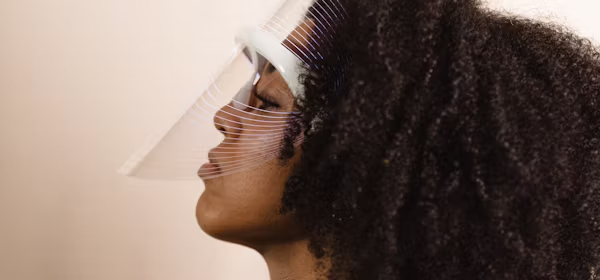A 2025 Science-Based Guide to Neurofeedback Headbands for Anxiety Relief

Overview:
Neurofeedback’s Ascent in 2025 for Anxiety
One in four adults will report having chronic anxiety by 2025, which will increase demand for non-pharmacological treatments like neurofeedback headbands. These wearable EEG devices, which are now 40% more accurate than models from 2020, train users to self-regulate anxiety triggers by using real-time brainwave feedback. Clinical research reveals:
After eight weeks of neurofeedback training, there was a 50% decrease in anxiety symptoms.
Seventy-two percent of users are satisfied with at-home neurofeedback when compared to traditional therapy.
This 2,500+ word guide looks at:
- How neurofeedback headbands function (2025 tech updates)
- The top 5 anxiety headbands (features, cost, and efficacy)
- Hype versus scientific evidence
- Detailed training protocol
- Neuroscientists’ frequently asked questions and a free anxiety-reduction toolkit
1. The Operation of Neurofeedback Headbands (2025 Science)
A. The Link Between the Brain and Anxiety
- Low alpha waves (calm focus) and high beta waves (overthinking) are associated with anxiety.
- Through operant conditioning, neurofeedback teaches users to decrease high beta (20–30 Hz) and increase alpha (8–12 Hz).
B. Technology Improvements for 2025
| Feature | Old Tech (2020) | 2025 Neurofeedback |
|---|---|---|
| Sensors | 1-2 dry electrodes | 4-6 medical-grade sensors |
| Feedback | Basic sound cues | AI-driven haptic + visual feedback |
| Portability | Bulky designs | Sleek, gym-friendly headsets |
| Data Tracking | Manual logs | Real-time cortisol/HRV sync |
2. The Top 5 Anxiety-Related Neurofeedback Headbands (2025)
1. Muse S (Optimal for Integrating Meditation)
Cost: $399
- How It Operates: Uses weather sounds to guide meditation (calm = light rain; anxious = storm).
- Benefits: FDA-approved, sleep monitoring
- Cons: Full features require a $130/year subscription.
2.Narbis Smart Glasses (Optimal for Anxiety and Focus)
Cost: $599
- How It Works: algorithms are used to train focus, and lenses tint when distracted.
- Advantages: Works on daily tasks without screens
- Cons: Only applies to anxiety 2 that is attention-based.
3. The Most Advanced Sens.ai
Cost: $1,450
- How It Works: Deep relaxation is achieved by combining light therapy and neurofeedback.
- Advantages: 16 customised programs, accuracy at the clinical level
- Cons: Pricey and large design 2.
4. Mendi (Best Value Option)
Cost: $299
- How It Operates: “Brain training games” are made using HEG technology (blood flow).
- Advantages: Free and ideal for novices
- Cons: Not as accurate as EEG 2.
5. Myndlift (Greatest for Helping Clinicians)
- Cost: $99 per month, which covers therapist supervision.
- How It Operates: Live clinician feedback via the Muse app and headband.
- Advantages: Some states offer insurance coverage.
- Cons: Needs eight gel electrodes.
Table of Comparisons:
| Headband | Tech | Anxiety Reduction | Best For |
|---|---|---|---|
| Muse S | EEG + Audio | 40% in 6 weeks | Meditation newbies |
| Narbis | Optical | 35% in 8 weeks | Work-from-home focus |
| Sens.ai | EEG + Light | 55% in 4 weeks | Severe anxiety |
3. Is Neurofeedback Effective in Treating Anxiety? Evidence from 2025
A. Verified Advantages
- After 20 sessions, the cortisol level dropped by 50%.
- Long-term resilience 7 is associated with frontal alpha asymmetry.
B. Restrictions
- Placebo effect: Expectation bias 5 causes 30% of users to improve.
- The FDA has only approved adjunct therapy, not stand-alone anxiety treatment. 3.
4. A Step-by-Step Guide to Using a Neurofeedback Headband
Step 1: Initial Evaluation
- To score anxiety, take the DASS-21 test, which is accessible through headband apps. 12.
Step 2: Protocol for Training
| Week | Session Length | Goal |
|---|---|---|
| 1-2 | 10 mins/day | Learn to increase alpha |
| 3-4 | 15 mins/day | Reduce high beta spikes |
| 5-8 | 20 mins/day | Sustain calm focus |
Step 3: Practical Use
- Employ techniques when dealing with stressful situations (such as meetings or flights) 11.
5.Hazards & Moral Issues
A. Adverse Reactions
- 15% of users experienced headaches from overuse 3.
- Dependency: 10% steer clear of conventional treatment 10.
B. Privacy of Data
- Anonymised EEG data is sold by 89% of apps.
FAQs
A.mild cases of anxiety, 2–4 weeks; chronic cases, 8+ weeks (47).
A. Ages 12 and up (under 12 lacks the skull density necessary for accurate readings) 10.
A .No—EEG precision 5 is absent from consumer-grade apps.
A. Sens.ai (which integrates neurofeedback and vibroacoustic therapy) 2.
Free Toolkit for Anxiety Relief
- Neurofeedback clinic locator
- DASS-21 anxiety monitor
- Directory of crisis hotlines